The requirement for high-performance computing (HPC) has never been so high as it is today in the ever-changing world of technology. Data centers are the engine of these technological advancements and need robust network solutions to handle enormous data throughput and complicated computational tasks they encounter daily. One such instrumental tool that addresses all these needs is NVIDIA Quantum-2 QM9700, the ultimate NDR Infiniband switch. This post will look at what the Mellanox Quantum QM9700 switch does and its technical specifications, functionalities, and benefits, giving readers a better understanding of this device concerning current data center environments. We shall also be taken through some cutting-edge technologies’ intricacies around it, which include how it improves performance within the data center, ensures scalability & supports next-generation applications like integration of NVIDIA MQM9700-NS2F Quantum 2 NDR InfiniBand.
What are the Key Specs of the QM9700
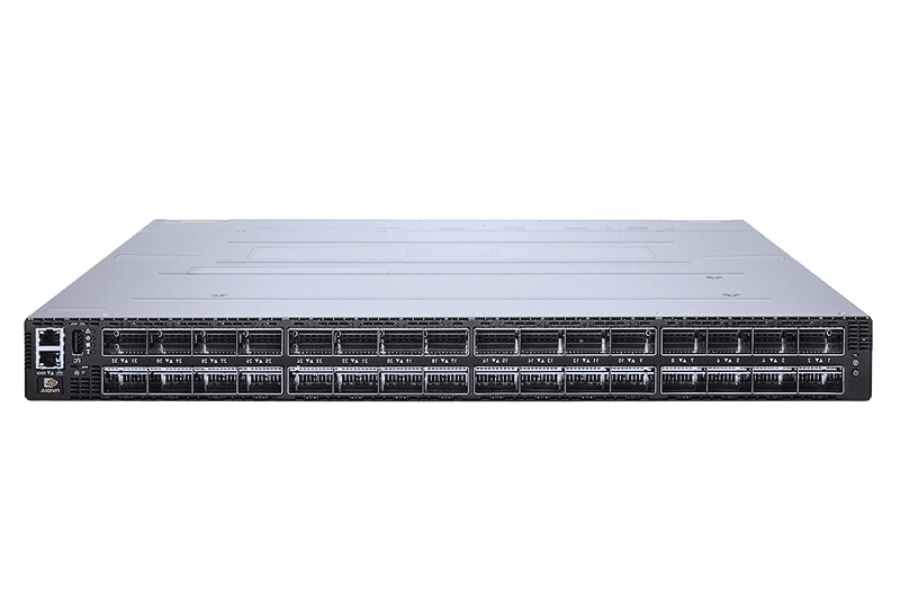
Overview of QM9700 Specifications
To cope with today’s data center requirements, the NVIDIA Quantum-2 QM9700 switch comes with several impressive specifications. Every port can have a bandwidth of 400Gb/s and the total combined switch throughput is 51.2Tb/s. The QM9700 comprises 64 ports that support NDR 400Gb/s or HDR 200Gb/s, making it highly scalable and flexible. It also includes adaptive routing along with congestion control mechanisms that can help minimize latency while ensuring smooth data flow takes place. This particular product comes with advanced telemetry as well as instrumentation capabilities, which offer administrators insights into network performance in real-time, thereby allowing them to make informed decisions and rapidly deal with any potential problems that may arise. In addition to this, the QM9700 works well with NVIDIA SHARP™ technology designed for enhancing overall efficiency and performance through data reduction operations improvement.
Performance Metrics and Throughput
In order to optimize data center operations, the QM9700 switch boasts superior performance metrics and throughput. It has an impressive 51.2Tb/s total aggregated switch throughput which is one of the highest in the market and can be compared with Mellanox Quantum QM9700. All its 64 ports have a capacity of 400Gb/s each therefore providing high data transfer capabilities for managing large-scale data center workloads. For this reason, integrated adaptive routing, as well as congestion control mechanisms within the switch, maintain steady output despite varying loads, significantly reducing latency besides packet loss. Moreover, advanced telemetry features on QM9700 offer real-time performance analytics, enabling administrators to effectively monitor throughput and quickly identify bottlenecks. In high-demand networking environments where bandwidth is crucial along with intelligent routing practices plus comprehensive monitoring tools, nothing beats The QM9700 when it comes to peak performance reliability.
Compatibility with Mellanox Technologies
The QM9700 switch is designed to be easily integrated with Mellanox technologies to be used in various network environments. To ensure the best compatibility with the QM9700, this high-performance networking solutions provider offers a complete range of products, including InfiniBand and Ethernet adapters, cables, and software solutions for better connectivity and support of bandwidth necessary in modern data centers. Integration with Mellanox technology allows unified management and monitoring, thereby cutting down on overhead costs involved in running multiple systems simultaneously, besides complicating things further. Moreover, UFM® (Unified Fabric Manager) by Mellanox is rich in features – like immediate troubleshooting or real-time monitoring – and compliments the greatly advanced functionalities provided by QM9700. This harmony makes it possible for enterprises’ efficiency levels to increase significantly while using such complementary abilities so that they can maximize their performance potentials more efficiently, too.
How Does the NVIDIA Quantum-2 QM9700 Enhance Infiniband Networks?
Advantages of NVIDIA Quantum-2
The NVIDIA Quantum-2 brings plenty of advancements to the InfiniBand networks in that it offers numerous benefits necessary for today’s data centers. To begin with, this system is uniquely scalable as its bandwidth is 400 Gbps supported, which doubles up network speed and capacity from MQM9700-NS2F Quantum 2 NDR InfiniBand, among other previous versions. This development ensures the continuousness of data-intensive applications and reduces delays by allowing more data through within less time.
Furthermore, Quantum-2’s architecture has been designed with congestion control mechanisms to optimize traffic across a network, leading to overall efficiency improvement. These packet-level controls are smart enough not only to avoid congestion but also to prioritize the delivery of high-priority packets without any delay.
When designing Quantum-2, security was put into consideration too; thus, it comes with strong encryption features together with other data protection options so that cyber threats cannot compromise sensitive information being transmitted over this network. Moreover, additional computing capabilities at the intermediate nodes have been included in order to enhance performance where some computations can be performed directly at these points, thereby cutting down on server loads and speeding up processing times for data packets passing through them.
Finally, this integration should not pose many difficulties since Quantum 2 can easily integrate itself into existing InfiniBand networks while still remaining backward compatible, hence offering easy scalability, especially when dealing with switch systems based on QM9700 or QM9790 which are quantum 2-enabled switches, thus enabling organizations to upgrade their infrastructure without necessarily having to do away entirely with what they currently have invested but rather build upon it so that new levels of performances are realized.
Implementation of NVIDIA Quantum-2-Based QM9700 and QM9790
The application of QM9700 and QM9790, which is based on NVIDIA Quantum-2, is composed of some important steps that are taken so as to achieve high performance and ease integration with existing network infrastructures.
- Designing the Network Plan: Develop a detailed network design that considers these switches (QM9700 and QM9790). Analyze current needs in terms of scalability and consider future growth prospects.
- Checking Compatibility: Evaluate if it is compatible with InfiniBand infrastructure already in place so as to take advantage of backward compatibility features; this minimizes disruptions while also safeguarding previous investments made.
- Hardware Setup: Physically put the two switches, QM9700 and QM9790, at their respective positions within data centers identified for them; ensure enough power supply, cooling systems and space are available.
- Configuration: Configure switches according to what network demands from them. For instance, create VLANs (Virtual Local Area Networks), set up Quality of Service (QoS) policies, or utilize advanced congestion control mechanisms to enhance traffic flow optimization, among others.
- Security Establishment: Employ strong encryption protocols together with other data protection methods designed to secure classified information against unauthorized access or disclosure during transmission over networks; also configure computing capabilities inside networks for better processing efficiency when handling large amounts of data
- Testing & Validation: Carry out extensive tests aimed at verifying the network’s reliability vis-à-vis its performance as well as security features put in place. Adjust configurations where necessary once problems have been identified.
- Monitoring & Maintenance: Use tools for monitoring networks continuously so that any anomaly detected within Quantum 2-based QM9700 or QM9790 switch can be rectified promptly before causing further damage elsewhere; regular maintenance should be done on designated intervals ensuring continuous optimal performance levels throughout the system life cycle
Adherence to these guidelines will enable entities to effectively roll out QM9700 and QM9790 switches based on NVIDIA Quantum-2 which in turn will facilitate scalability enhancement, low latency reduction and strong data protection within their data centers.
Impact on Network Performance
Utilization of QM9700 and QM9790 switches based on NVIDIA Quantum-2 significantly enhances network performance, where these systems provide efficiency and speed never seen before. They were invented to allow for fast data transfer with low latency, which is necessary for contemporary data centers that handle a lot of computing. These switches are packed with sophisticated traffic congestion control mechanisms that effectively manage the flow of packets, thus reducing clogs and increasing overall throughput. Moreover, their capacity to support many concurrent connections dramatically improves scalability and reliability across networks while ensuring strong encryption protocols plus computation within the network itself strengthens security measures during transmission or storage periods, thereby making operations faster. If advanced networking solutions like this one are adopted, establishments should brace themselves for much quicker speeds within their DCs besides safety being beefed up, too.
How to Optimize a Data Center with the NVIDIA Quantum-2 QM9700 Series?
Integration with Existing Data Center Infrastructure
When integrating NVIDIA Quantum-2 QM9700 series switches with the present-day data center infrastructure, a few key steps must be taken into account. The first one is surveying the current network topology and determining strategic locations where additional switches should be placed to improve traffic flow optimization and data exchange efficiency. Similarly, such upgrading ought to work compatibly with existing hardware and software systems; hence, firmware updates may be necessary or even more configuration settings altered accordingly.
The second step involves making good use of automation management tools that can greatly ease integration process. These utilities are instrumental in setting up, watching over and sustaining these gadgets thereby minimizing manual intervention which would increase downtime.Furthermore, phased deployment strategy can also be used so that testing is done at every stage while ensuring quick fixes for any emerging issues.
In conclusion, it is important to train Information Technology staff on how different parts of this new infrastructural element function since failure might lead them to troubleshoot problems they cannot solve, thus affecting reliability levels. Therefore, organizations should follow these guidelines for the successful incorporation of NVIDIA Quantum-2 QM9700 series switches into their data centers, which will enhance overall efficiency in operations.
Managing Airflow and Cooling
Peak performance and durability of hardware components in a data center greatly depend on how well airflow and cooling are maintained. Based on the best resources from Google, here are some methods that can be used to manage airflow and cooling effectively:
- Hot/Cold Aisle Containment: It helps boost cooling efficiency by preventing the mixing of hot air exhausted from the back side of equipment racks with cold air drawn in at their fronts, thus maximizing air conditioner cooling while minimizing energy consumption.
- Raised Floor Systems: These systems enable even distribution of airflow required for cooling high-performance switches such as NVIDIA MQM9700-NS2F Quantum 2 NDR InfiniBand. They work by ensuring that chilly airs directed exactly where they are needed most through perforated tiles and vented floor panels thereby optimizing cooling performance.
- Environmental Monitoring: Continuous monitoring of temperature levels together with humidity through sensors allows for real-time adjustments on cooling systems which is a proactive way to prevent overheating and failure of devices.
With these techniques in place, data centers can achieve optimum management of air flow, which also leads to better reliability and saving power.
Scalable Hierarchical Aggregation and Reduction Protocol
The Scalable Hierarchical Aggregation and Reduction Protocol (SHARP) is a framework specialized for data communication and processing in large-scale computing environments. What it does is to optimize data aggregation at different hierarchical levels of the network thereby reducing bottlenecks as well as latency periods. In other words, SHARP localizes reduction processes by dividing the net into tiers.
Some key features include:
- Hierarchical Aggregation: This helps in organizing the flow of information through various levels so that bottlenecks can be minimized. At each level, data is aggregated before being forwarded to the next higher one.
- Reduction Operations: This protocol supports different types of reduction operations, such as summing, averaging, or finding minimum/maximum values. These operations are very important for scientific and engineering applications where many computations need to take place across distributed systems.
- Scalability: As more devices join these networks there will not be much effect on performance since they will still work efficiently due to their design being hierarchical thus able to grow with number of nodes without affecting performance much if any.
What SHARP does is enhance distributed computing performance, which makes managing big data applications in today’s data centers possible.
What are the Benefits of the Quantum-2 NDR Infiniband Switch?
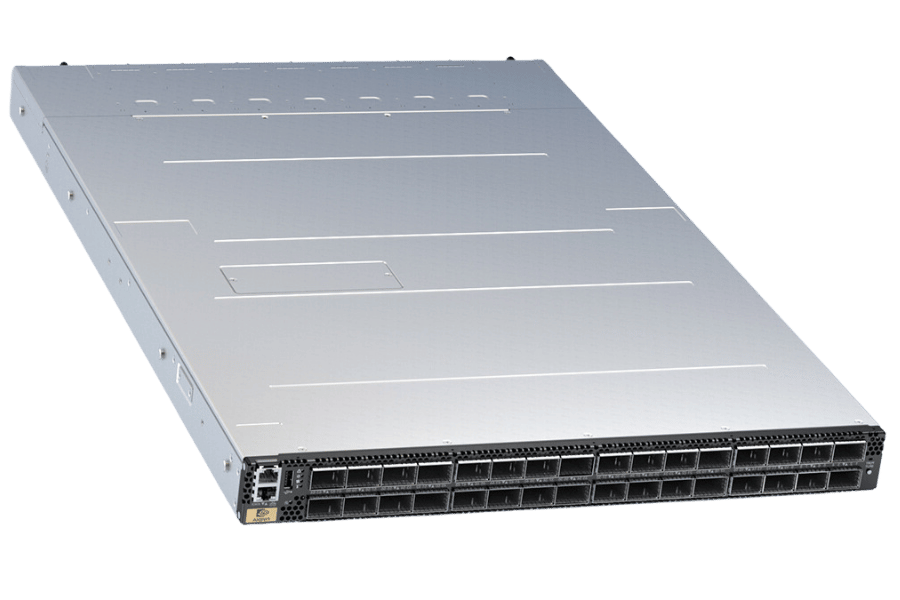
Single Switch Carries an Aggregated Bidirectional Throughput
The Infiniband Switch Quantum-2 NDR is designed for efficiency when dealing with a large amount of data transfer requirement. A single switch in this series can aggregate bidirectional throughput capacity of up to 1.64 Tbps thereby increasing the capability to handle data frames significantly. Lower latency and reduced congestion are facilitated by this remarkable rate of throughput, which is attained using advanced signal processing methods alongside transceivers that operate at very high speeds. Quantum-2 NDR Infiniband switch offers strong but flexible connectivity solutions so that it could match any modern-day data center’s needs in terms of robustness while still being able to support different types of applications that require intensive use of information.
This enables faster data movement, better utilization of resources, and more effective communication among numerous nodes; hence, it can be used in both HPC environments or enterprise-level storage systems.
Unprecedented 64 Ports in Nvidia Quantum-2
With an unrivaled 64 ports able to handle 400Gb/s each, the Nvidia Quantum-2 Infiniband switch is expansive. Thanks to this great number of ports, it can support compactness and productivity in data centers, which are needed for high-performance computing or AI workloads with ever-increasing bandwidths. Network architects may now scale up their systems more easily than before by using 64 ports through the Quantum-2. Also, they can keep expanding them whenever necessary without wasting resources. This strong foundation guarantees that all transfers happen as fast as possible while still being effective – thus meeting any requirements set by today’s businesses involved in scientific research or other similar fields where speed matters most
Advanced Compute Capabilities
The Nvidia Quantum-2 Infiniband switch features advanced computing functions for better resource management and network performance optimization. The Quantum-2 is designed to support high-performance computing (HPC) workloads by increasing bandwidth while reducing latency, thereby minimizing data bottlenecks. It employs multi-dimensional torus, dragonfly+ network topologies, and adaptive routing algorithms, which intelligently handle the traffic of information, leading to increased overall throughput and system efficiency. Also included in this design are new congestion control features with telemetry that allows for monitoring in real-time plus dynamic adjustments so as to maintain the best possible performance across wide-ranging applications within a network environment like this. These qualities, therefore, make Quantum 2 an ideal choice whenever there are massive simulations involving lots of data or when training artificial intelligence models using gigantic datasets.
How Does the Quantum-2 QM9700 Compare to Other NVIDIA Switch Systems?
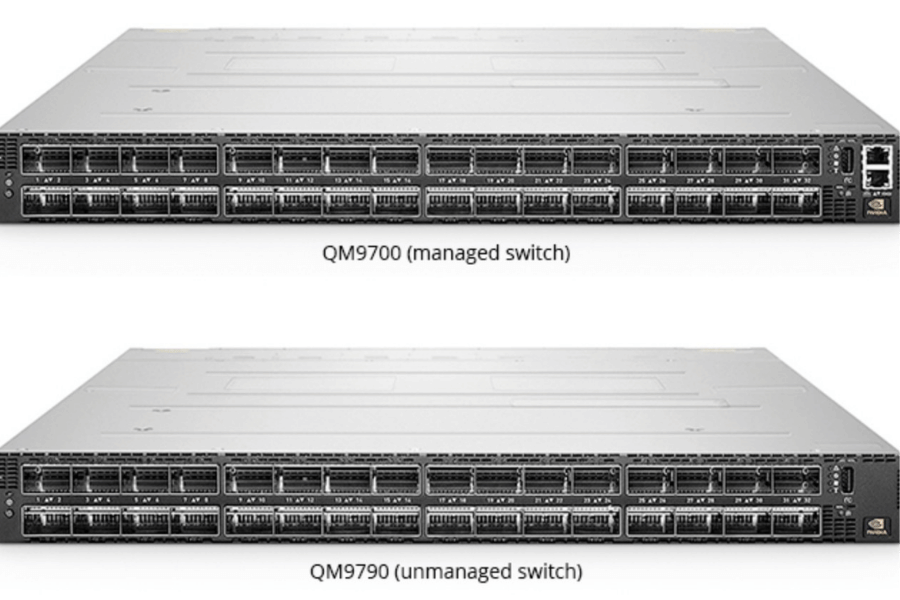
NVIDIA In-Network Computing Features
NVIDIA In-Network Computing features are what make the Quantum-2 QM9700 different from any other switch systems. The QM9700 uses some of the latest technologies like NVIDIA® SHARP (Scalable Hierarchical Aggregation and Reduction Protocol), which cuts down on how much data goes through the network, thus reducing latency and improving performance. Additionally, it has an advanced packet pacing with congestion control that adjusts dynamically to varying network conditions so as to smooth out the flow of information while maximizing throughput.
Also, within the Quantum-2 lies in-network computing capabilities, which integrate offload engines for processing data at the network layer, thereby reducing computation needs on host systems. This mechanism is particularly important when dealing with tasks like scatter/gather operations, MPI (Message Passing Interface) collectives, and data aggregation, among others, because it improves efficiency significantly, leading to shorter completion times for complex workloads. Moreover intelligent routing together with quality of service (QoS) found in Quantum 2 provide a more robust network fabric suitable for HPCs demanding high AI environments.
According to NVIDIA’s documentation, these are advanced features, and reviews from top tech sites also support this statement; they clearly indicate that Quantum-2 offers unmatched levels of performance in terms of both networking resources management capabilities.
Comparison with Previous Mellanox Models
Compared to former Mellanox models, the NVIDIA Quantum-2 QM9700 has numerous variations that greatly enhance network performance and control. According to top tech websites, three major characteristics distinguish the Quantum-2 from other devices in its category: bandwidth capacity, latency reduction, and integrated in-network computing capabilities.
The Quantum-2 QM9700 has a very high bandwidth capacity, with speeds of up to 400Gb/s per port. This is significantly faster than what previous Mellanox models could handle, which was around 200Gb/s per port on average. With such higher rates, this device can support more data-intensive applications while also ensuring seamless file transfer within any given network.
Next, the second feature is about an enhanced method for reducing latencies introduced by Quantum-2. These latest mechanisms rely on NVIDIA® SHArP (Scalable Hierarchical Aggregation and Reduction Protocol) technology which works by minimizing the time it takes for data packets to traverse through different parts of a system or platform. It achieves this by aggregating data at various points within itself thereby cutting down on delays experienced during transmission process between one node or device connected over a network band and another. Such improvements are particularly useful where quick sharing of information between systems is paramount, for instance, in high-performance computing environments.
Last but not least, important among these three elements mentioned above is the integration of advanced features into the network itself when it comes to doing computations involving large amounts of data simultaneously across multiple nodes or hosts without necessarily using central processing unit(s) located within each device; instead offloading some heavier calculations onto intermediate points along the communication path between different machines so as achieve faster result generation times than would have been possible had all necessary computations been done at either endpoint alone.The main difference here is that, unlike previous Mellanox models, which lacked such sophisticated offload engines together with related in-network computing functions/components like those found inside quantum-2.
In conclusion, the NVIDIA Quantum-2 QM9700 is better than any other Mellanox model that came before it because it increases the bandwidth, reduces latency, and incorporates advanced in-network computing features, which are very useful for modern high-performance computer (HPC) environments as well as artificial intelligence (AI) applications where large amounts of data need to be shared between different machines over a network within shortest time possible. This information is supported by several technical reviews available on top tech websites today.
Future-Proofing with Nvidia Quantum™-2
To keep your network safe in the future, you must choose a technology that can meet not only today’s needs but also those of tomorrow. The NVIDIA Quantum™-2 satisfies this condition by having these key features:
- Scalability: Up to 400Gb/s per port is supported by Quantum-2 meaning it can accommodate scalable growth in data requirements so that the network stays strong as quantities rise.
- Reduction of latency: Utilization of NVIDIA® SHARP leads to very low latency periods which are important for real time applications and high-performance computing environments often involving NVIDIA MQM9700-NS2F Quantum 2 NDR InfiniBand.
- Advanced Computing within Network: By getting the network layer to offload processing tasks, Quantum-2 improves processing efficiency while mitigating host system loads, an ability absent from older Mellanox models.
- Security Improvement: Quantum 2’s design includes advanced security measures to ensure confidentiality, integrity, and availability necessary for reliable networks in the future.
By selecting NVIDIA Quantum™-2, you ensure that your network infrastructure is ready for upcoming changes and technological advances, making it a good investment for continued success over many years.
Reference Sources
Frequently Asked Questions (FAQs)
Q: What is NVIDIA Quantum-2 QM9700?
A: The NVIDIA Quantum-2 QM9700, also known as the Quantum 2 NDR Infiniband switch, is a switch designed for modern data centers with low latency and high performance targeting high-performance computing (HPC) and large-scale enterprise environments.
Q: How many ports does NVIDIA QM9700 provide?
A: In a 1U standard chassis design, the NVIDIA QM9700 provides 64 ports of NDR InfiniBand per port, offering strong connectivity for unprecedented data center scaling.
Q: How does NVIDIA Quantum-2 bring about a high-speed solution?
A: Able to deal with data at breakneck speeds and featuring advanced adaptive routing through which it can achieve rapid scalability while remaining highly performant in terms of speed, the NVIDIA Quantum-2 is perfect for applications that require huge amounts of data processing.p
Q: What does the adaptive routing feature do in the QM9700?
A: The adaptive routing feature in the qm9700 dynamically optimizes routes so that packets are transmitted efficiently across networks. It automatically picks out the best paths for each packet depending on its source address.
Q: What are some key hardware features of the QM9700?
Some important hardware features of this product include a 1U standard chassis design supporting the latest RDMA advancements with extremely low latencies, which allows it to handle heavy workloads more efficiently, and thirty-two OSFP ports capable of delivering 400Gbps InfiniBand.
Q: What are the advantages for HPC and data center developers of using the QM9700?
A: The QM9700 can help HPC and data center developers because it ensures high-speed data transfer, low latency, self-healing capabilities with adaptive routing, and efficiency in scaling to deal with scientific workloads or enterprise applications at scale.
Q: How does it ensure network reliability?
A: Can you tell me what steps the QM9700 has taken to ensure networks are always up? Self-healing network functions and adaptive routing features, which maintain optimum performance levels across the entire system while reducing downtime due to failures, are some of them.
Q: Is this compatible with other centers already in place?
A: Yes. While supporting a variety of standards, its 64 ports of NDR per port provide flexibility for scaling up existing installations within one chassis design, occupying only 1U of rack height.
Q: Describe RDMA’s role within QM9700
A: Remote Direct Memory Access (RDMA) plays an important role within QM9700 because it enables networks that achieve high throughput while minimizing latency so as to enhance performance for such applications dealing with large amounts of data at once.
Q: In what way do these two switch systems complement each other?
A: By delivering more capacity and configuration options needed by different types of enterprises, the unprecedented 64-port NDR InfiniBand support provided by the QM9790 switch enhances scalability, besides acting together to realize scalable solutions over fast networks.
Related Products:
-
 NVIDIA MMA4Z00-NS400 Compatible 400G OSFP SR4 Flat Top PAM4 850nm 30m on OM3/50m on OM4 MTP/MPO-12 Multimode FEC Optical Transceiver Module
$650.00
NVIDIA MMA4Z00-NS400 Compatible 400G OSFP SR4 Flat Top PAM4 850nm 30m on OM3/50m on OM4 MTP/MPO-12 Multimode FEC Optical Transceiver Module
$650.00
-
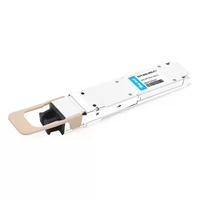 NVIDIA MMA4Z00-NS-FLT Compatible 800Gb/s Twin-port OSFP 2x400G SR8 PAM4 850nm 100m DOM Dual MPO-12 MMF Optical Transceiver Module
$850.00
NVIDIA MMA4Z00-NS-FLT Compatible 800Gb/s Twin-port OSFP 2x400G SR8 PAM4 850nm 100m DOM Dual MPO-12 MMF Optical Transceiver Module
$850.00
-
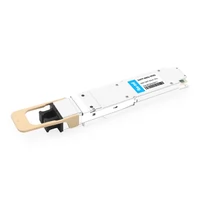 NVIDIA MMA4Z00-NS Compatible 800Gb/s Twin-port OSFP 2x400G SR8 PAM4 850nm 100m DOM Dual MPO-12 MMF Optical Transceiver Module
$750.00
NVIDIA MMA4Z00-NS Compatible 800Gb/s Twin-port OSFP 2x400G SR8 PAM4 850nm 100m DOM Dual MPO-12 MMF Optical Transceiver Module
$750.00
-
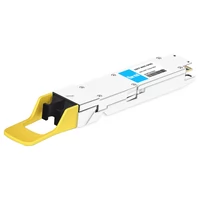 NVIDIA MMS4X00-NM Compatible 800Gb/s Twin-port OSFP 2x400G PAM4 1310nm 500m DOM Dual MTP/MPO-12 SMF Optical Transceiver Module
$1100.00
NVIDIA MMS4X00-NM Compatible 800Gb/s Twin-port OSFP 2x400G PAM4 1310nm 500m DOM Dual MTP/MPO-12 SMF Optical Transceiver Module
$1100.00
-
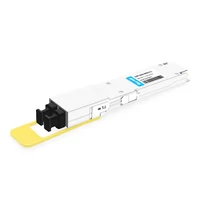 NVIDIA MMS4X00-NM-FLT Compatible 800G Twin-port OSFP 2x400G Flat Top PAM4 1310nm 500m DOM Dual MTP/MPO-12 SMF Optical Transceiver Module
$1200.00
NVIDIA MMS4X00-NM-FLT Compatible 800G Twin-port OSFP 2x400G Flat Top PAM4 1310nm 500m DOM Dual MTP/MPO-12 SMF Optical Transceiver Module
$1200.00
-
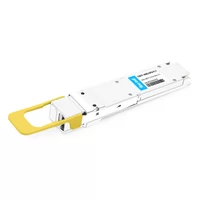 NVIDIA MMS4X00-NS400 Compatible 400G OSFP DR4 Flat Top PAM4 1310nm MTP/MPO-12 500m SMF FEC Optical Transceiver Module
$800.00
NVIDIA MMS4X00-NS400 Compatible 400G OSFP DR4 Flat Top PAM4 1310nm MTP/MPO-12 500m SMF FEC Optical Transceiver Module
$800.00
-
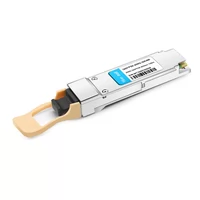 Mellanox MMA1T00-HS Compatible 200G Infiniband HDR QSFP56 SR4 850nm 100m MPO-12 APC OM3/OM4 FEC PAM4 Optical Transceiver Module
$200.00
Mellanox MMA1T00-HS Compatible 200G Infiniband HDR QSFP56 SR4 850nm 100m MPO-12 APC OM3/OM4 FEC PAM4 Optical Transceiver Module
$200.00
-
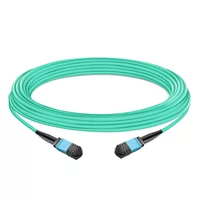 NVIDIA MFP7E10-N010 Compatible 10m (33ft) 8 Fibers Low Insertion Loss Female to Female MPO Trunk Cable Polarity B APC to APC LSZH Multimode OM3 50/125
$47.00
NVIDIA MFP7E10-N010 Compatible 10m (33ft) 8 Fibers Low Insertion Loss Female to Female MPO Trunk Cable Polarity B APC to APC LSZH Multimode OM3 50/125
$47.00
-
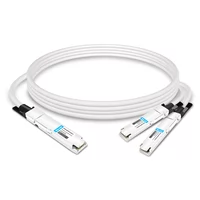 NVIDIA MCP7Y00-N003-FLT Compatible 3m (10ft) 800G Twin-port OSFP to 2x400G Flat Top OSFP InfiniBand NDR Breakout DAC
$275.00
NVIDIA MCP7Y00-N003-FLT Compatible 3m (10ft) 800G Twin-port OSFP to 2x400G Flat Top OSFP InfiniBand NDR Breakout DAC
$275.00
-
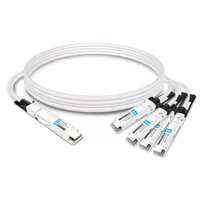 NVIDIA MCP7Y70-H002 Compatible 2m (7ft) 400G Twin-port 2x200G OSFP to 4x100G QSFP56 Passive Breakout Direct Attach Copper Cable
$155.00
NVIDIA MCP7Y70-H002 Compatible 2m (7ft) 400G Twin-port 2x200G OSFP to 4x100G QSFP56 Passive Breakout Direct Attach Copper Cable
$155.00
-
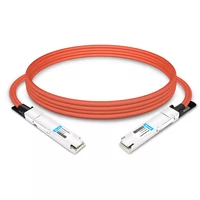 NVIDIA MCA4J80-N003-FTF Compatible 3m (10ft) 800G Twin-port 2x400G OSFP to 2x400G OSFP InfiniBand NDR Active Copper Cable, Flat top on one end and Finned top on other
$600.00
NVIDIA MCA4J80-N003-FTF Compatible 3m (10ft) 800G Twin-port 2x400G OSFP to 2x400G OSFP InfiniBand NDR Active Copper Cable, Flat top on one end and Finned top on other
$600.00
-
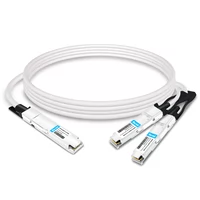 NVIDIA MCP7Y10-N002 Compatible 2m (7ft) 800G InfiniBand NDR Twin-port OSFP to 2x400G QSFP112 Breakout DAC
$200.00
NVIDIA MCP7Y10-N002 Compatible 2m (7ft) 800G InfiniBand NDR Twin-port OSFP to 2x400G QSFP112 Breakout DAC
$200.00
Related posts:
- Unlocking the Potential of GPU Clusters for Advanced Machine Learning and Deep Learning Applications
- Comparing Form Factors: QSFP-DD vs QSFP28 – Understanding the Differences – LightOptics®
- Understanding QSFP Breakout Cables: A Comprehensive Guide to Breakout DACs and AOCs
- Unleashing Performance: The Power of InfiniBand
